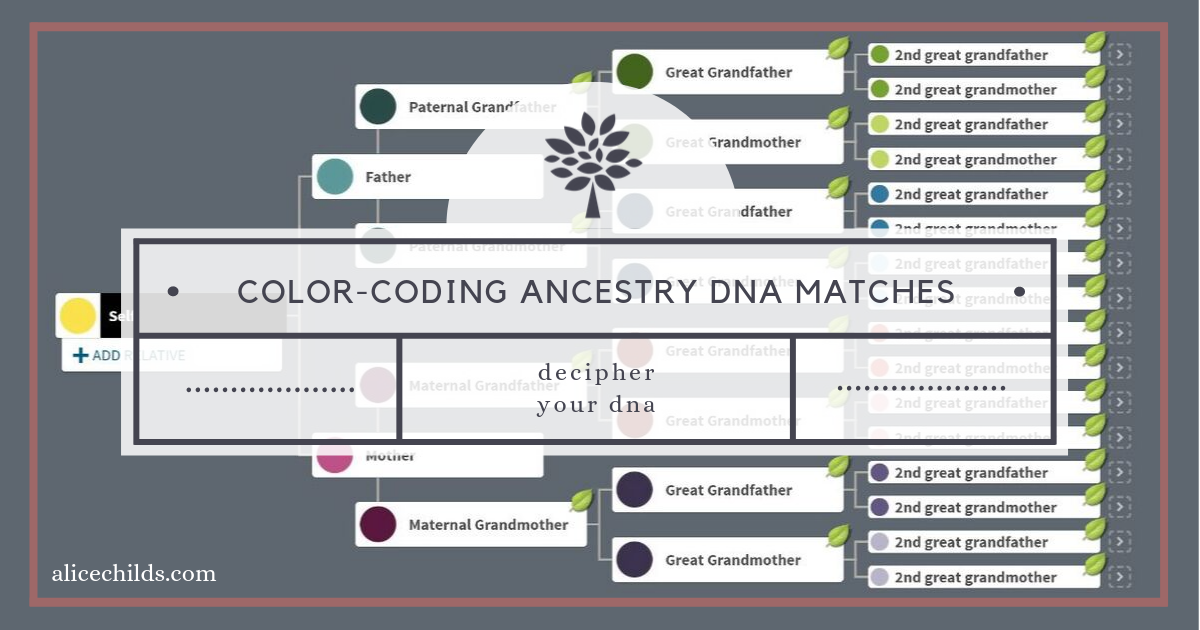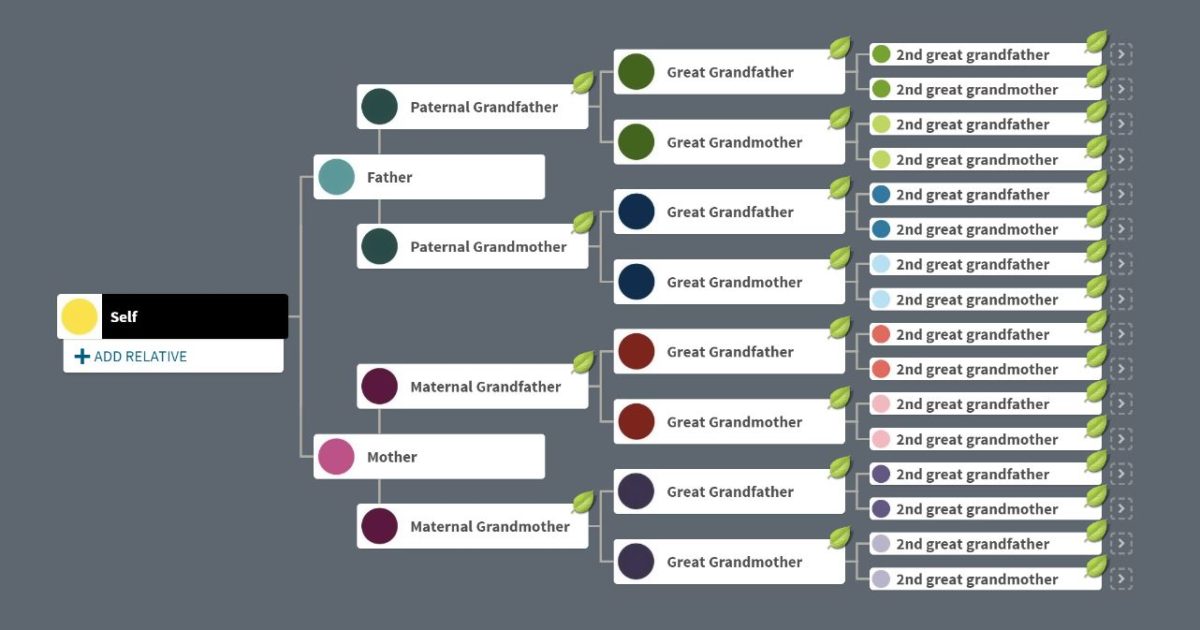
Last week I began the Research Like a Pro With DNA study group, hosted by Diana Elder, Nicole Dyer, and Robin Wirthlin of Family Locket. I’ve been excited to learn more about using DNA as an additional source of evidence in my research and I am learning so much already! It’s exciting that we have the ability to use DNA in our research! One of our assignments for the week was to assess our closest DNA matches. As part of this assignment, I began color-coding each of my matches using Ancestry DNA’s color tags.
I thought I had formulated a good plan for my color-coding system but quickly realized I needed to make some adjustments. After thinking and re-thinking, here is what I came up with:

First, I assign each match to either my paternal line (medium teal dot) or my maternal line (magenta dot). This allows me to set a filter to show only paternal matches or maternal matches, depending on which side of the family I am working on. Then, I assign another dot based on which ancestral couple is our Most Recent Common Ancestor (MRCA). Those with my paternal grandparents as MRCA’s receive a dark teal dot. I chose teal because it’s a mix of blue and green. Then, ancestral couples on my paternal grandfather’s line receive varying shades of green, and those on my paternal grandmother’s line are assigned varying shades of blue. If I know the match is on my paternal side but I’m not quite sure who the MRCA is, I simply assign the medium teal dot indicating paternal side. Now if I spot a teal, blue or green dot, I know the match belongs to the paternal side of my family.
I used the same idea for ancestral couples on my maternal grandparents’ line. Those matches with my maternal grandparents as MRCA’s receive a violet dot, because violet is a mix of red and purple. Then, ancestral couples on my maternal grandfather’s line receive dots in the red family. Ancestral couples on the maternal grandmother’s line receive purple dots. Matches on the maternal side with an undetermined MRCA receive only a magenta dot.
So far, this system seems to be working for me. In my mind, it made more sense to assign a color to a couple rather than an individual. I am not sure what I will do with MRCA’s beyond the 2nd-great level. I am considering continuing on with the lightest shade of whatever color is assigned to that branch of the family.
If you are interested in creating your own color-coding guide, I created mine after reading instructions in this blog post from The DNA Geek, Leah Larkin. She includes a link to her “dummy tree” on Ancestry where she has shared the color swatch files for you to upload as profile pictures on your guide.
I’d love to hear how you are using Ancestry DNA’s color tags to sort your matches! Let me know in the comments below!

Alice-
Ron White from the recent DNA Group. It appears that you select colors for the fourth tier down (e.g. 2nd great grandfather) from eight of the nine remaining colors in the Ancestry pallet. These are the closest that you can find to the third tier colors, so that from the maternal grandfather’s mother you use pink. Am I right thus far in my thought process?
A problem is that this only leaves you one additional color or any of the other issues you might want to flag with color such as research status (e.g. brick wall), geographic region, etc. Do you have a solution for this issue? Keep up the good work!
-Ron White
Ron-
Good to hear from you! There just aren’t enough colors to have a new color for every generation are there? I am considering continuing on with the lightest shade of whatever color is assigned to that branch of the family as I go back farther than the 2nd Great-Grandparents. For flagging other issues, you still have all the yellow/orange/brown colors to work with.